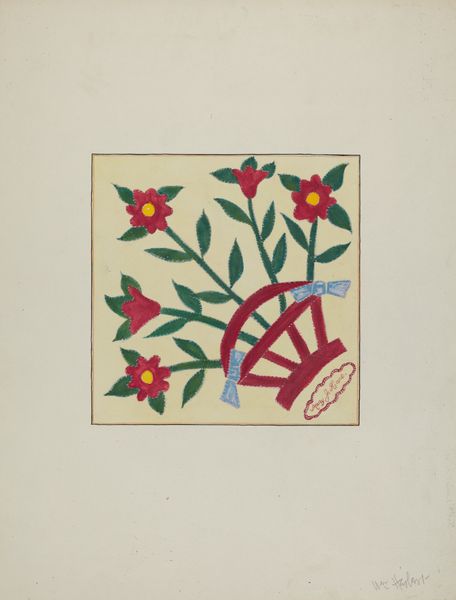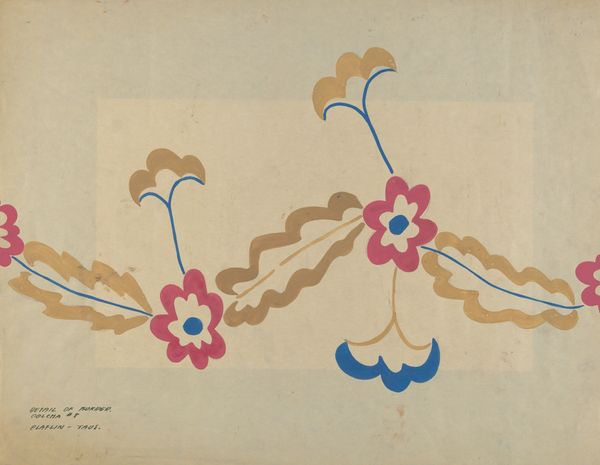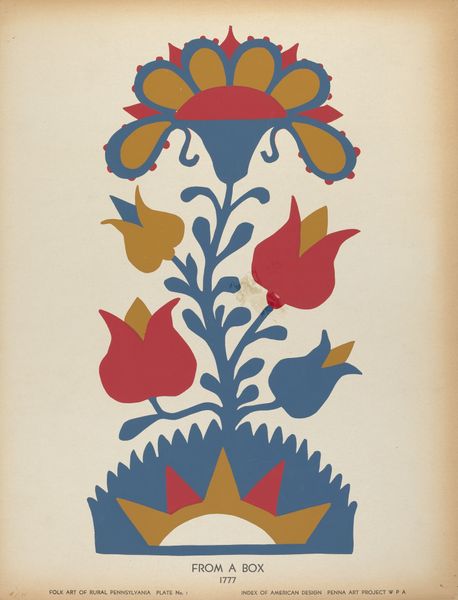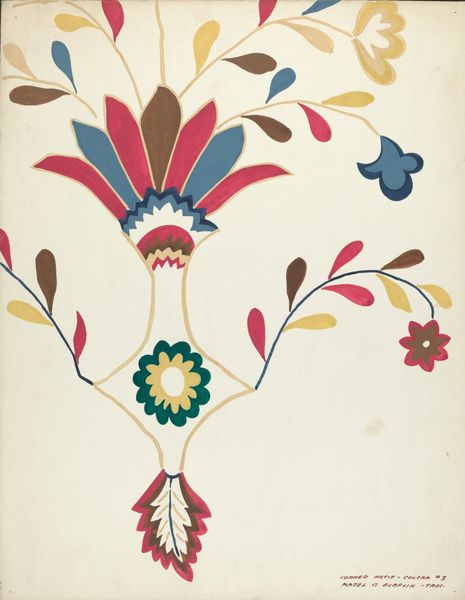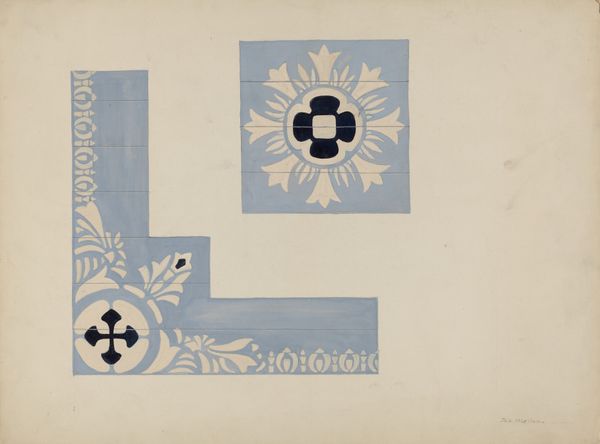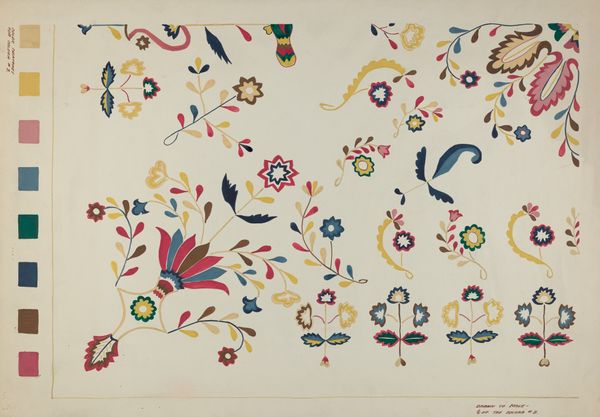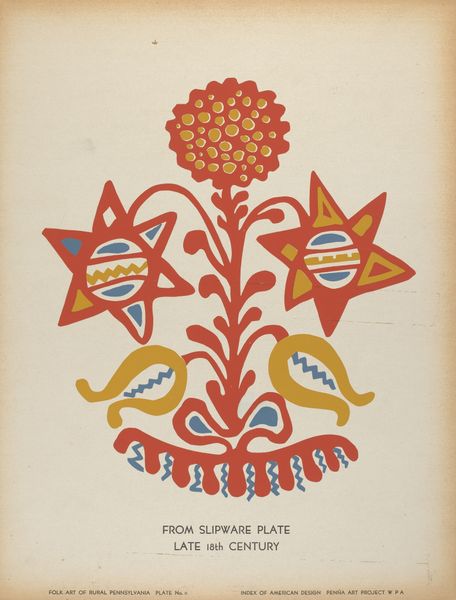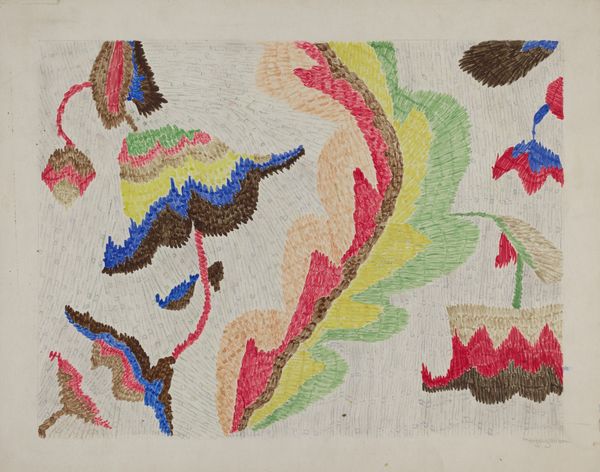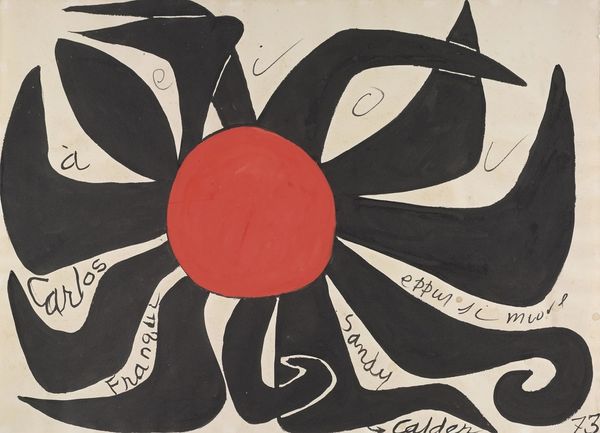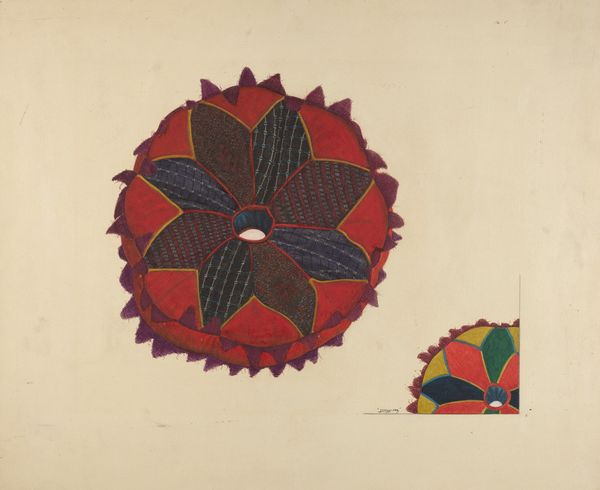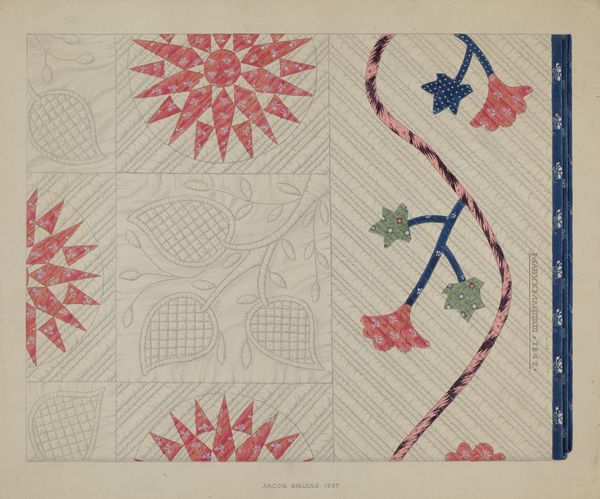
drawing, watercolor
#
drawing
#
water colours
#
watercolor
#
geometric
#
abstraction
Dimensions: overall: 26.2 x 36 cm (10 5/16 x 14 3/16 in.)
Copyright: National Gallery of Art: CC0 1.0
Editor: So, here we have Majel G. Claflin's "Colcha," a watercolor and drawing piece done between 1935 and 1942. I'm struck by its bold simplicity. The floral motif is so geometric, almost like a quilt pattern. What's your interpretation of this work? Curator: It’s interesting that you see it as a quilt pattern. I see a direct connection to the public works projects of the Depression era. Given the date, the artist was very likely involved in the government's efforts to support artists and promote a particular vision of American identity. Does the geometry strike you as inherently modern or drawing on traditional crafts? Editor: I suppose both! It's got that flat, almost abstract quality of modernism, but you're right, it also looks hand-crafted. The colours also feel quite traditional. So was this meant to represent something about American identity? Curator: Possibly. Artists employed by the government were often tasked with celebrating regional crafts or creating idealized images of American life. The design looks like a “Colcha” embroidery. That makes me think of the New Mexican Spanish Colonial tradition, which became romanticized, marketed to tourists, and was then considered ‘authentic’ folk art. Claflin’s design can be read as an artistic exploration, appropriating traditional visual idioms into contemporary design. Do you think this complicates our understanding of “American identity”? Editor: Absolutely. It shows that "American identity" isn't one thing, but a complex mix of different cultural influences and that government funding played a big part in shaping art. I learned to view these designs in terms of socio-political context. Curator: Indeed! And how institutions – including the government and museums – influence what art is made, and how we understand its place in American history.
Comments
No comments
Be the first to comment and join the conversation on the ultimate creative platform.

